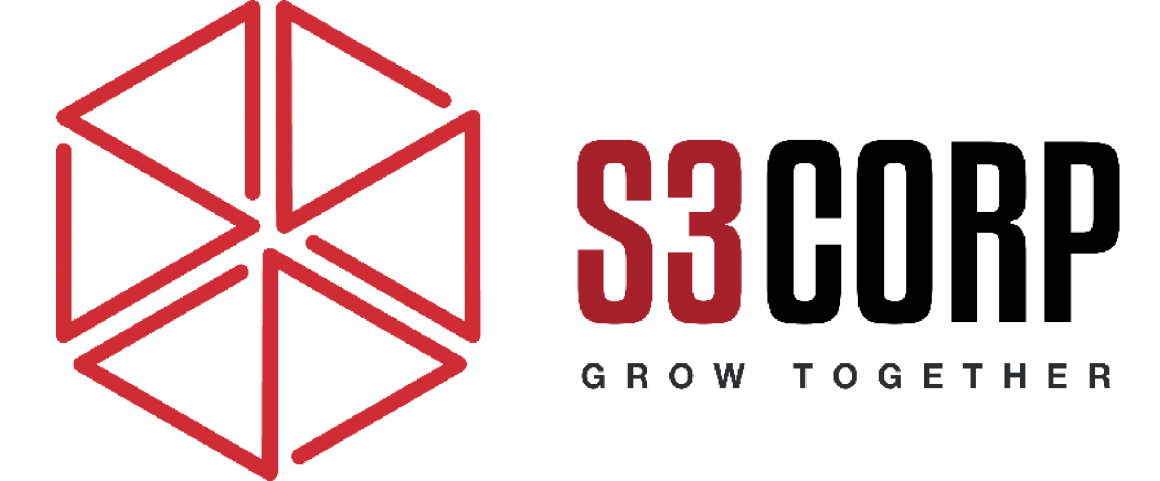Outsourcing software development can be a smart and efficient way to complete projects, especially when in-house resources, skills, or time are insufficient. It enables businesses to access specialized expertise, reduce costs, and accelerate timelines. However, outsourcing requires meticulous planning and informed decision-making. Choosing the right provider and managing the process effectively are critical to ensure project success. A competent provider can streamline your workflow and deliver a polished product, while a poor choice can lead to delays, financial losses, and frustration. This guide breaks down the key elements to consider when outsourcing software development, offering practical advice for maximizing your project’s potential.
Importance of Comprehensive Project Proposals
A complete project estimate proposal is the foundation of a successful outsourcing collaboration. It should include every essential component of the development process to avoid ambiguities or misunderstandings later. Key elements like analytics, design, layout, architecture, code development, testing, deployment, maintenance, and training must be outlined clearly. This ensures that all parties have a shared understanding of the scope and deliverables. When reviewing proposals, focus on the level of detail provided. Each stage of the process should include a clear breakdown of activities, responsibilities, and timelines. This will help you assess whether the provider has thoroughly understood your requirements and whether they possess the capacity to meet them.
Analytics or Specification
This phase sets the foundation for the entire project. Analytics or specifications involve gathering requirements from the client and translating them into actionable tasks for the development team. Every feature, functionality, and performance expectation should be documented here. This ensures there is no ambiguity about what the client expects and what the development team is tasked with delivering.
The process starts with discussions or workshops with stakeholders to clarify goals and priorities. These insights are used to draft a detailed requirements document. This document should outline the scope, user stories, technical constraints, and success metrics. Accurate specifications prevent misunderstandings, which could otherwise lead to project delays or budget overruns.
Design
Design focuses on creating the visual and interactive aspects of the project. This step transforms the project’s concept into a tangible interface. The proposal should specify whether the design will include wireframes, prototypes, or fully developed UI/UX mockups. Designers should aim to balance user experience with aesthetics, ensuring the interface is both appealing and intuitive.
This section must also account for client feedback cycles. It should detail how revisions will be handled, the tools used for collaboration, and any design standards or guidelines that will be followed. Providing clarity here ensures smooth collaboration between designers and clients, leading to a product that meets expectations.
Layout
The layout bridges the design and development phases. It involves structuring how the content and interface elements will appear within the final product. This step ensures that the design translates effectively into code without losing functionality or visual quality.
Including layout in the proposal demonstrates attention to detail. It should specify the technologies to be used, such as responsive design frameworks or grid systems. Additionally, this section should include timelines for creating layouts and highlight how they will be tested across different devices and screen sizes. By doing so, clients can understand how their project will look and perform in real-world conditions.
Architecture & Design
The architectural phase is critical for ensuring scalability, security, and maintainability. This stage involves planning the software’s structure, such as defining how different components interact, what databases are needed, and which frameworks or technologies will be used.
A well-structured architecture avoids technical debt and ensures the system can handle future growth. The proposal should explain how the architecture will align with the client’s goals. For example, it could address specific performance requirements, data storage needs, or integration with third-party services. By including this information, you build client confidence in the project’s technical soundness.
Program Code Development
Code development is the backbone of the project. This section should provide an overview of how the coding will be carried out, including programming languages, coding standards, and version control systems. A clear breakdown of milestones is essential to show progress and maintain accountability.
The proposal should also address how the team will handle challenges such as debugging and resolving compatibility issues. It should highlight how quality control measures, such as peer reviews or automated testing, will ensure the code meets high standards. Providing these details reassures clients of the team’s professionalism and expertise.
Code Documenting
Proper code documentation is often overlooked but is essential for long-term project success. This step involves creating clear and concise documentation that explains how the code works. It ensures that future developers can easily maintain, modify, or build upon the existing system.
The proposal should outline what types of documentation will be provided. This might include in-line comments within the code, technical manuals, or API documentation. Additionally, it should specify whether the client will have access to this documentation and how it will be updated as the project evolves.
Software Test Results
Testing ensures the product works as intended. This phase includes unit testing, integration testing, performance testing, and user acceptance testing. The proposal should describe how each type of testing will be conducted, who will be responsible for it, and how issues will be documented and resolved.
Providing detailed information about testing demonstrates a commitment to delivering a high-quality product. For example, specify which testing tools will be used, how test environments will be set up, and what metrics will determine success. This clarity minimizes risks and ensures the client understands the steps being taken to avoid post-deployment issues.
Deployment of Code on the Customer’s Server
Deployment involves transferring the final product to the client’s server or hosting environment. This step must be meticulously planned to avoid disruptions. The proposal should explain the deployment process, including any required configurations, dependencies, or testing on the live server.
It is also essential to include a timeline for deployment and details about support provided during this phase. For instance, specify whether your team will offer on-site assistance, remote support, or a combination of both. These details ensure a smooth transition and help clients feel supported.
Maintenance
Maintenance is crucial for the product’s longevity. The proposal should include a section on post-launch support, detailing what services will be provided and for how long. Common services might include bug fixes, performance optimization, and feature updates.
The proposal should also clarify whether maintenance will be included in the initial project cost or offered as an ongoing service. Providing transparency about maintenance terms builds trust and sets realistic expectations for future collaboration.
Training
Training ensures the client and their team can use the product effectively. The proposal should describe what training materials or sessions will be provided. This might include user manuals, video tutorials, or live workshops.
Additionally, the proposal should outline who will conduct the training, how long it will take, and what topics will be covered. Clear training plans empower the client to maximize the product’s value, ensuring satisfaction with the final deliverable.
Reducing Costs Through Technical Specifications
Drafting a detailed technical specification is one of the most cost-effective steps you can take before outsourcing a project. It acts as a blueprint for the development process, offering precise guidance to the provider. Specifications prevent the inclusion of unnecessary features, saving both time and resources. They also reduce the risk of miscommunication, which can lead to errors or rework. For instance, a lack of clear specifications may result in a developer misinterpreting key requirements, ultimately inflating costs or delaying timelines. Statistics underscore the financial impact of software errors, with the U.S. economy reportedly losing billions annually due to preventable mistakes. By addressing potential confusion early, technical specifications help mitigate such risks, paving the way for smoother execution.
The Necessity of Code Documentation
Code documentation is an often-overlooked aspect of software development that holds immense value for future maintenance and scalability. When code is poorly documented, understanding its structure and logic becomes a challenging task, particularly for developers who were not involved in the original project. Comprehensive documentation provides clarity on the coding process, enabling seamless modifications or troubleshooting down the line. Ensure that your provider delivers detailed documentation, including explanations of functions, workflows, and dependencies. A few scattered comments are insufficient; aim for a robust, structured overview that any developer can interpret. Proper documentation minimizes wasted time and potential errors, ensuring your software remains functional and adaptable as needs evolve.
Addressing Intellectual Property Rights
Protecting intellectual property (IP) is a critical consideration when outsourcing software development. Failure to address IP issues can result in legal disputes, financial penalties, and disruptions to your business operations. Explicitly define ownership of the software in your contract, specifying that all rights will transfer to you upon completion. Verify that the provider uses licensed or original components to avoid infringement claims. In cases where IP violations arise, the consequences can be severe, including the need to halt operations, pay damages, or rebuild the software entirely. To safeguard your investment, conduct due diligence and establish clear agreements on IP ownership and usage before starting the project.
Testing the Software Yourself
Trust is important in any business relationship, but it should never replace verification. Testing the software personally is essential to ensure that it meets your expectations and functions as intended. This approach allows you to identify overlooked issues, validate features, and assess usability from an end-user perspective. Even the most skilled developers can make errors or miss subtle details, so your involvement in testing adds an extra layer of quality control. By conducting thorough reviews during and after development, you can address potential shortcomings early, avoiding costly adjustments after deployment. Testing also fosters better communication with your provider, reinforcing accountability and building confidence in their work.
Staying Involved in the Development Process
Active involvement in the development process can significantly enhance project outcomes. Regular engagement allows you to monitor progress, provide timely feedback, and address potential issues as they arise. This level of oversight also helps you understand the methods and tools used, ensuring that development aligns with your objectives. Several project management tools can assist in maintaining visibility and collaboration throughout the process. JIRA, for instance, enables you to track progress, manage tasks, and communicate with your team effectively. Its flexible platform supports real-time updates and detailed reporting, making it a popular choice for complex software projects. Alternatively, open-source tools like Redmine offer comparable features at no cost, though they may require more technical expertise to set up and use.
Time tracking software further enhances project management by providing insights into productivity and resource allocation. Many modern systems integrate seamlessly with tools like JIRA and Redmine, offering features such as activity monitoring, detailed reporting, and billing integration. These tools help you ensure that your project stays on schedule and within budget, while also providing transparency in your partnership with the provider.
Ensuring Adequate Training
Proper training is essential to maximize the value of your software once it is delivered. Without adequate guidance, your team may struggle to utilize the software effectively, reducing its potential benefits. Request that the provider includes training as part of the final deliverable. This can take various forms, depending on the complexity of the software. For simpler tools, a live demonstration or video tutorial may suffice. For more sophisticated systems, detailed user manuals or comprehensive training sessions may be necessary. Establishing a clear training plan upfront ensures that your team is equipped to make the most of the software from day one.
Communication as a Cornerstone
Clear and consistent communication is vital for avoiding misunderstandings and ensuring smooth project execution. Regular updates and open channels foster collaboration, allowing you to address concerns promptly and keep the project on track. Effective communication also reduces the likelihood of misaligned expectations, which can lead to delays or additional costs. Establish a structured communication plan with your provider, specifying the frequency and format of updates. Use tools like email, video calls, or project management platforms to maintain a steady flow of information. By prioritizing communication, you create a foundation for a successful and productive partnership.
Conclusion
Outsourcing software development can offer significant benefits, but success depends on careful planning and active participation. By focusing on comprehensive proposals, detailed specifications, robust documentation, IP protection, testing, involvement, training, and communication, you can minimize risks and maximize outcomes. Selecting the right provider is only the first step; ensuring that the process is managed effectively will determine the ultimate success of your project.





